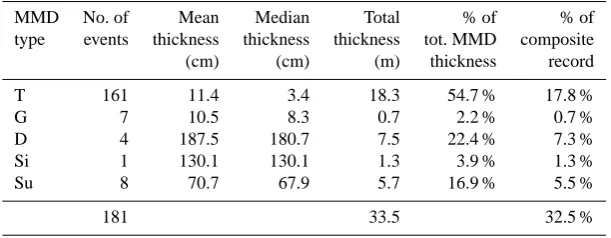Mass movement deposits in the 3.6 Ma sediment record of Lake El’gygytgyn, Far East Russian Arctic
Full text
Figure




Related documents
Like BRCA1 and Mdc1 and the yeast Rad9 and Crb2 proteins, 53BP1 possesses two repeating C-terminal BRCT motifs.. In addition, 53BP1 contains a tandem tudor domain, a stretch rich
While the most recent four years have seen a large in- crease in the number of biologic drug approvals for rare diseases, there is also an overall trend of increasing small
Methods: The educational program consisted of: intensive training, whereby each patient performed individual and collective sessions of three hours receiving information
Aims: This study analyzed the role of family type, personality traits, and social support as predictors of post-traumatic stress symptoms and quality of life in war veterans,
Licensed under Creative Common Page 429 not have a large share in foreign trade. In this regard, we review the trade turnover
One alternative for the treatment of infections caused by these bacteria could be the Antimicrobial Photodynamic Therapy (APDT) because its lethal effect; which is based on
Periodically sodium carbonate solution (0.005mol, 0.53g in 10ml water) was added dropwise to neutralized HCl evolved during the reaction.. Finally the contents were poured into
The proposed solution uses the techniques of image processing and deep learning to detect dangerous objects, human face and estimate the distance from the detected objects to pupil





